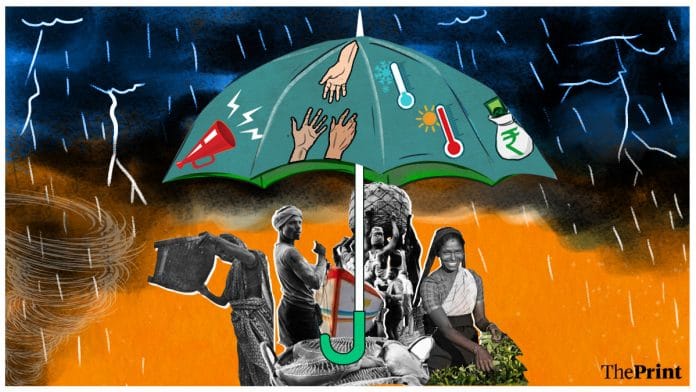India committed to net-zero carbon emissions by 2070 at the COP26 in Glasgow. This announcement helped keep the global goal of net-zero emissions alive.
At Glasgow, India also asked developed countries to put a trillion US dollars a year into the climate fund. Whenever the funding comes, the challenge for India will be to use it well. In the meantime, there is a need to work on developing systems and norms that help us do so.
For a developing country like India, climate change is a big challenge. On the one hand, it would mean putting sectors like energy, transport, infrastructure and manufacturing on a path of lower carbon emissions. On the other hand, it would require building resilience to disasters without compromising on meeting goals of growth, development and poverty reduction. These two considerations have underpinned the policy discourse in the country.
India is exposed to a whole range of climate- and weather-related hazards — floods, droughts, cyclones, heat waves, lightning, glacial lake outburst floods and so on. There is mounting evidence that due to climate change some of these hazards are becoming more frequent and severe.
More than 57 per cent of India’s farmland face the onslaught of extreme weather on a regular basis. Not only have severe cyclonic storms increased over the northern Indian ocean, there is a rise in cyclonic storms in the Arabian Sea. These are projected to rise.
So while India prepares to set out on the path to lower emissions, at the same time, it has to protect its people and their livelihoods from the ravages of more intense, frequent and unpredictable disasters.
This is a huge challenge, but there have been some important successes in the recent past. For example, India has seen 95-98 per cent reduction in mortality from cyclones in the last 15-20 years, a remarkable progress. Similarly, there has been a consistent and steep decline in heat wave-related mortality since 2015.
Also read: What is the Glasgow Climate Pact & why India did not commit to coal phase out
Local factors
Participation and governance at the local level is the key to building resilience. We need to understand how the signals that the climate system is delivering are affecting the biophysical systems and how they respond to those signals.
Similarly, we need to understand the inherent social, economic and cultural vulnerabilities of people, and how these come together to produce risk at the local level.
For example, there are differences in how a heat wave is experienced in Odisha and Rajasthan. Even within Odisha, the same level of temperature experienced in one district is different from how it is experienced in others. The key lies in localising the notion of risk and taking into account a range of local factors.
Finance
Efforts to adapt to climate change are costly. Building disaster-resilient cities, coastal towns and other infrastructure is one element of it. An equally large element is moving away from the dependence on the crops and livestock that people have traditionally cultivated and reared.
Money for resilience can be used in different ways, and must be done imaginatively. The Finance Commission has given states resources to address the whole spectrum of disaster risk management needs, not just response, and this has to be used creatively.
People-friendly scientific communication
In cyclone- and heat wave-related work there has been an effort to connect science to society. For adoption of new practices science has to be presented in an understandable, actionable, usable fashion.
In contrast to what was done 20 years ago, cyclone landfall forecasts by the India Meteorological Department (IMD) now tell you not just location and speed but also what wind speed would be and what the impact would be.
Saying wind speed of 150 km/hour is somewhat abstract, but when you say that all the coconut palms are going to get uprooted, then it becomes very real. In other words, scientific communication has to be transformed into something that is people-friendly.
Also read: India may be behind on climate goals but its one-stop shop for electric vehicles is visionary
Measurable targets for adaptation outcomes
While there is discussion in the media on resilience and on raising climate-related commitment, particularly reduction of emissions, there is a need to have the same level of ambition for adaptation, not just in terms of how much money we are going to put into adaptation, but the concrete results we will achieve on the ground.
For example, the coastal areas of India need to commit that they will have a certain level of resilience of power infrastructure so that for the most extreme cyclone events, their power system will be restored within three days. This is a measurable target. They can measure themselves against this target 10 years from now.
Local data
Currently we have a lot of data in different places and different formats. The tedious work of digitising the climate data of the past 150 years, and systematising data on our assets and their vulnerabilities is an essential building block of understanding risk.
India has had remarkable success in saving lives from climate- and weather-related disasters. Protecting livelihoods is the next frontier. We need to learn lessons from the past, anticipate the future, and create more resilient systems, society and economy.
Ila Patnaik is an economist and a professor at National Institute of Public Finance and Policy.
Kamal Kishore is member, National Disaster Management Authority.
Views are personal.
Also read: Forget the words of this COP26 deal. Follow the money






